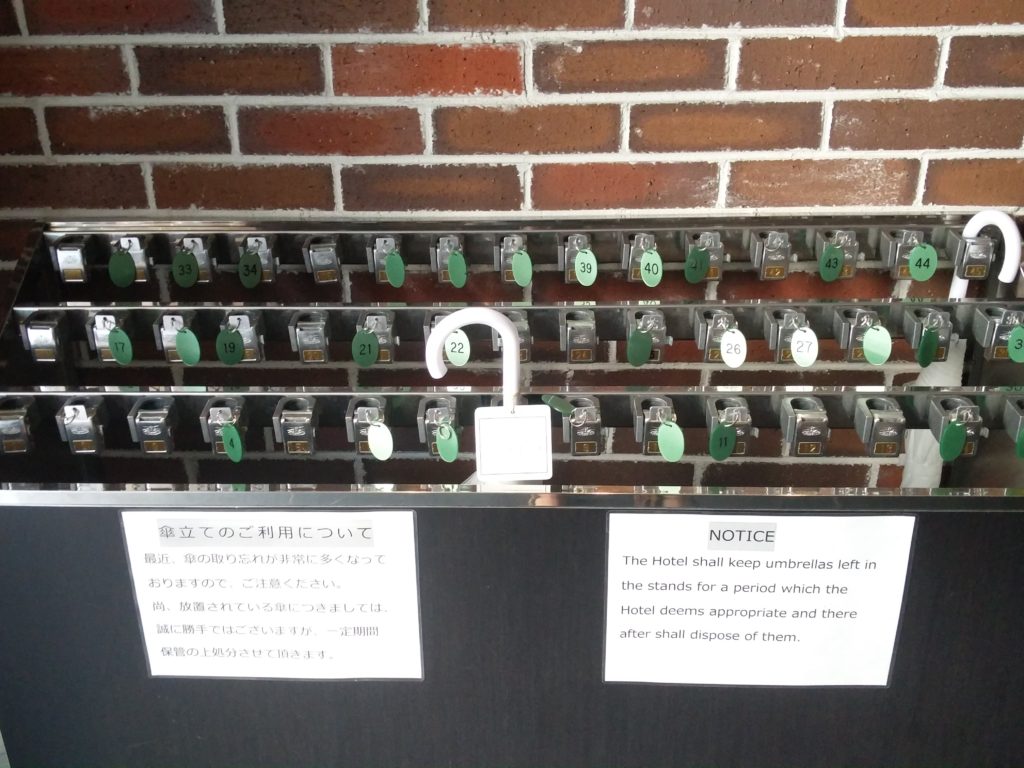Compared to our bumpy arrival into China, getting settled in Kyoto was a piece of cake. We got checked in, rented bicycles, and set off on the first of many culinary adventures.

The bike-shop employee had recommended a place just up the street, and only after sitting down we realized we were at the Japanese equivalent of TGI Fridays.
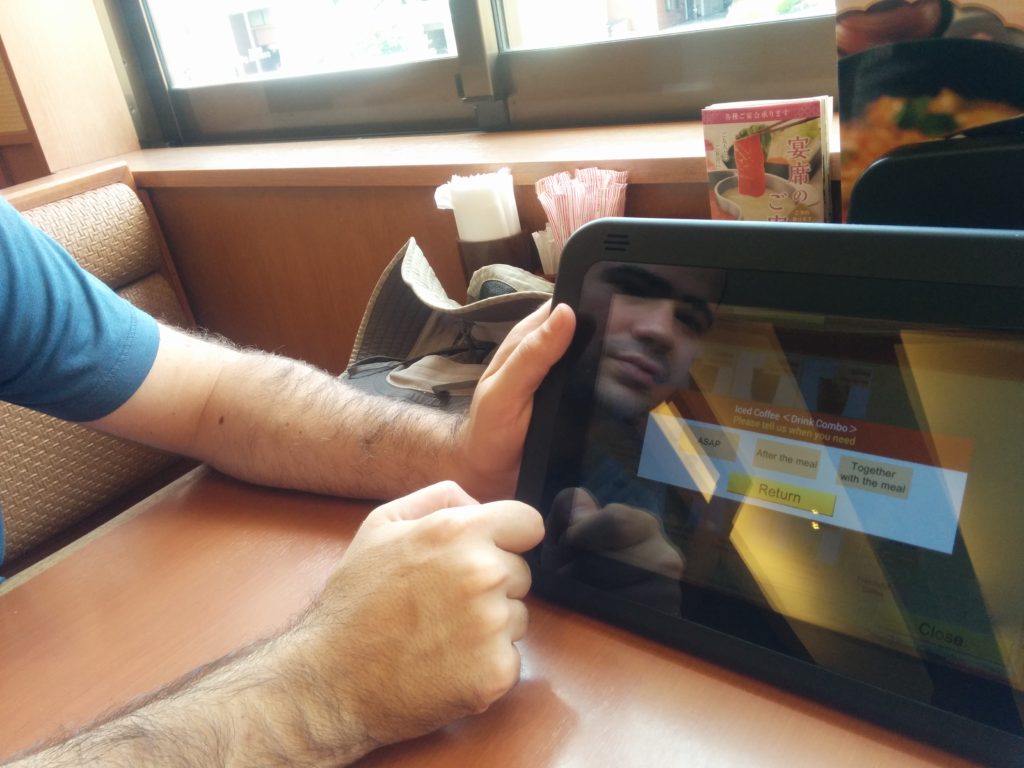
The food, ordered by iPad, was actually quite good overall. If this was Japanese fast food, we were even more excited to try the real thing!
As we continued on our mission to find a SIM card, we discovered that while biking culture is well-established in Kyoto, the bicycle infrastructure is not so great — there’s very little bike parking, parking violations are strictly enforced, and commonly bikes share the narrow sidewalks with pedestrians (neither of whom follow the rules).
Moving slower wasn’t so bad, since it gave us a better opportunity to observe the local environment and culture. The streets were impeccably clean. A few times, we saw businesspeople repeatedly bowing at departing colleagues until they were 5+ blocks away. And, there were lots of women walking around in full kimono (many of them presumably geishas or trainees called maikos).
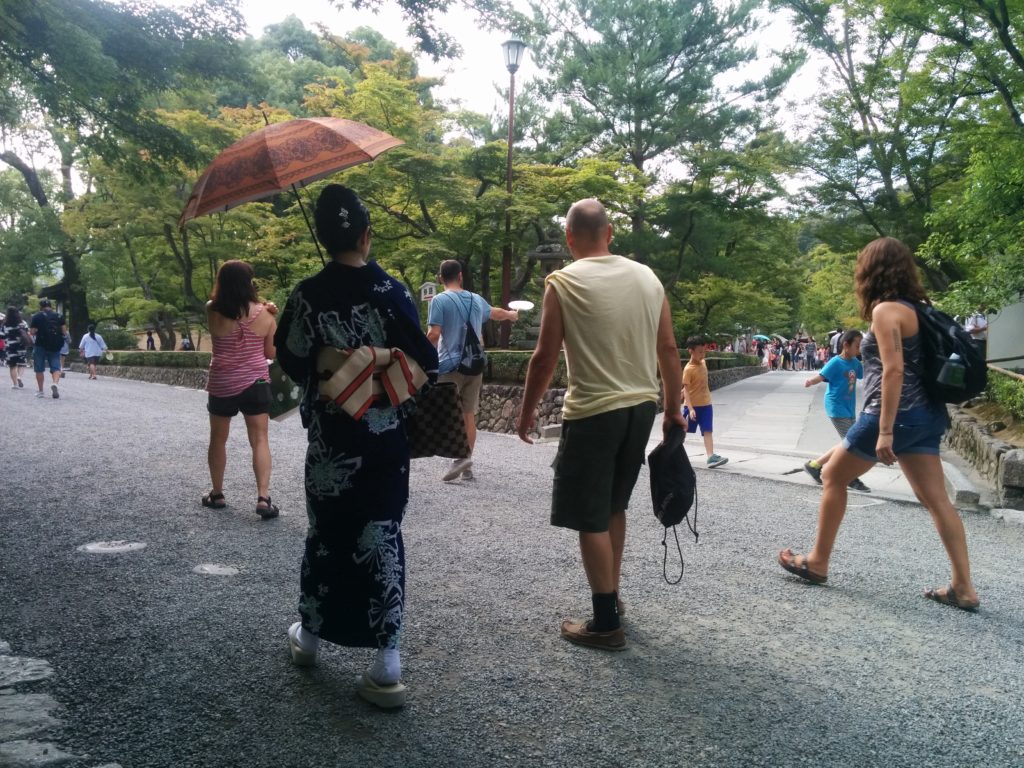
There were vending machines everywhere, selling everything from drinks to electronics — Japan has more vending machines per capita than any other country in the world.
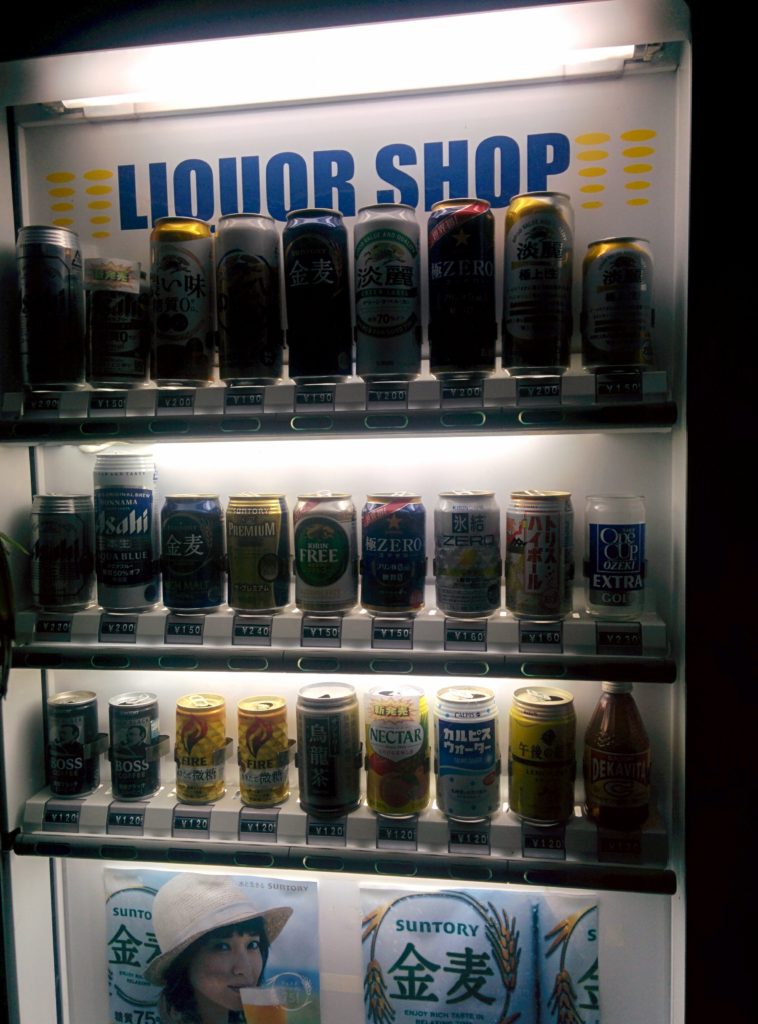
This technophilia combines with the cultural norms of propriety, orderliness, and formality (see the welcome package at one of our Airbnbs)
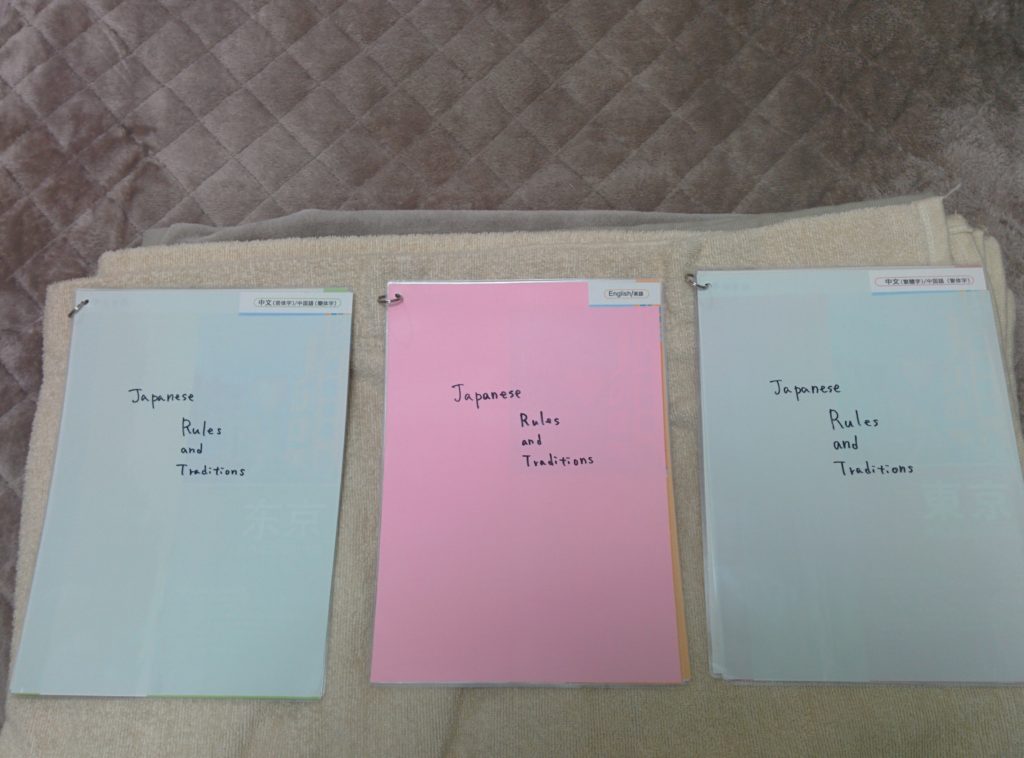
and results in many interesting examples of ‘Japan-ness’, like this Washlet, which comes with various cleansing water jets and a speaker to drown out any unseemly noises:

and somewhat surprisingly, a penchant for gambling on pachinko (we played but had no idea what we were doing).

Throughout our stay in Kyoto, we gorged ourselves on fantastic Japanese food: from sushi,
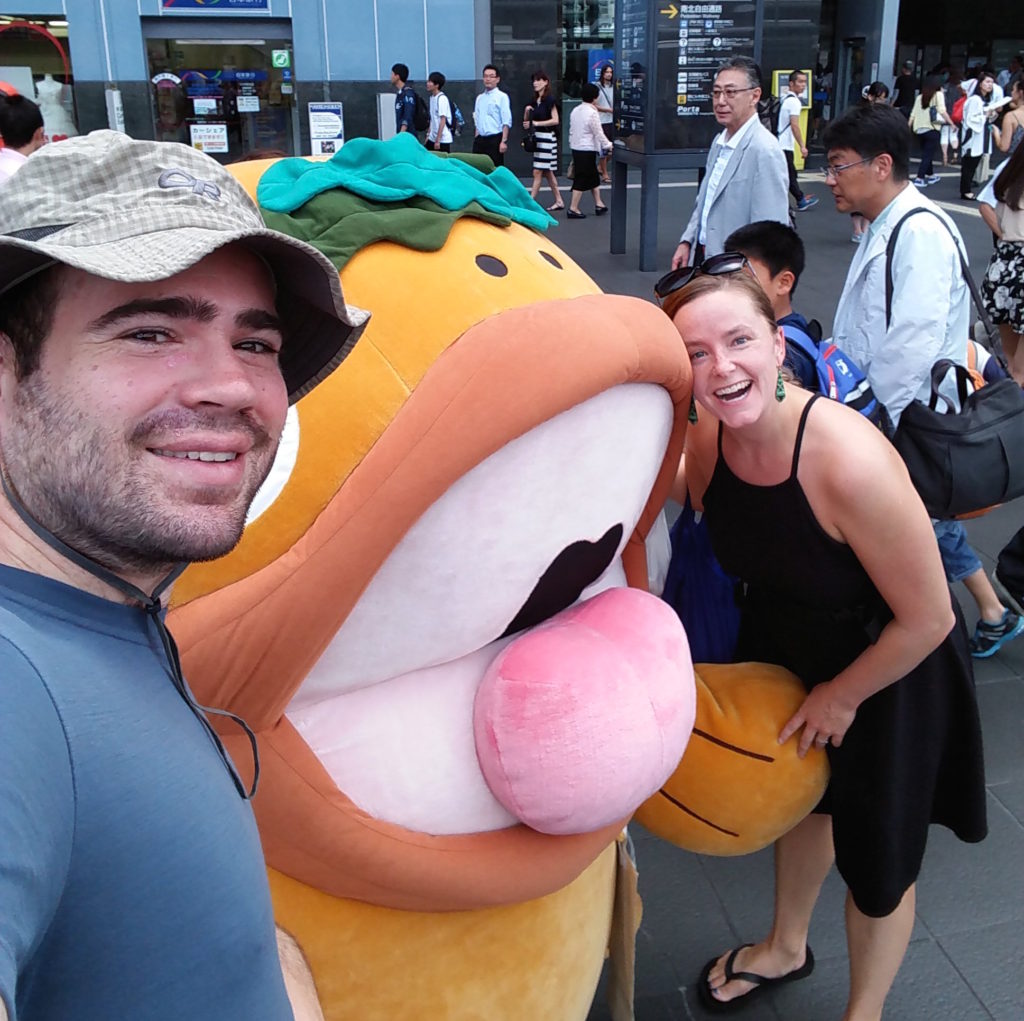
to a variety of ramen soups,

to gyoza so good we went twice,

to a Murasawa Sirloin Steak that tasted like a cross between a normal steak and a stick of butter (in a good way!).

As we paid the bill at the steak place, we spotted a map on the wall to a nearby snow monkey sanctuary, which was just up the hill to the west of the city.
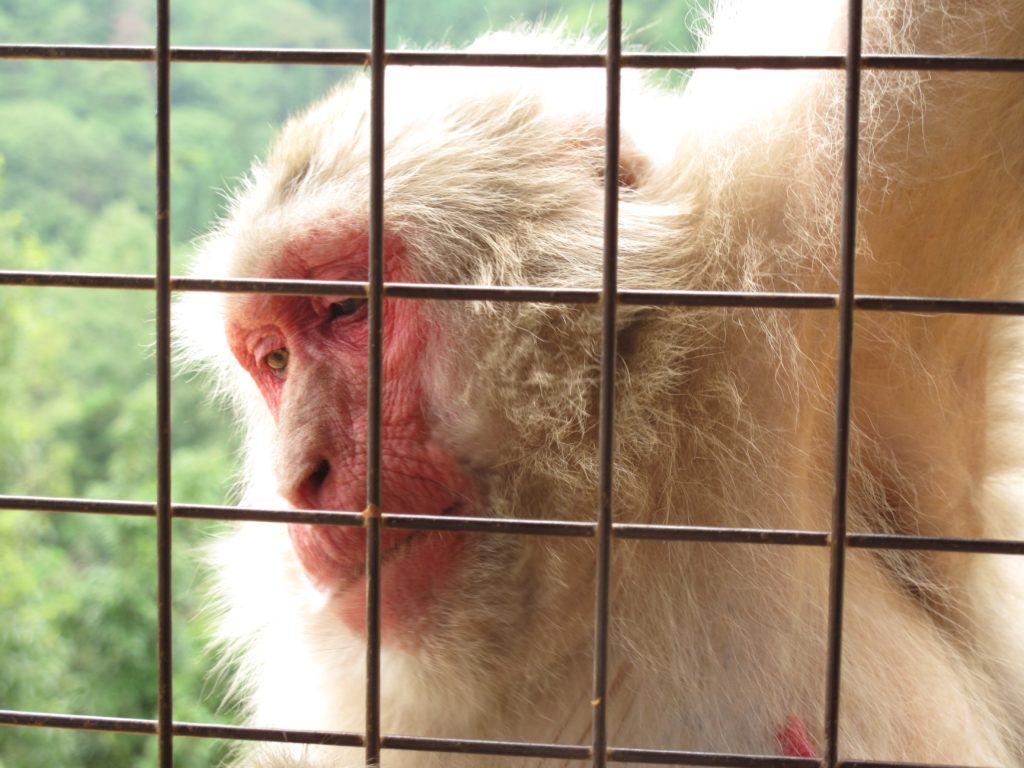
Snow monkeys (or Japanese macaques) are the only monkey species native to Japan, and they’re well-known for swimming in hot springs during the cold winters. We got to feed them through a fence, and watched these adorable babies play-fighting until Jason had to drag Sarah away.

One day, we got up early to attend a Zen meditation class held in a large temple complex.

The class turned out to be awesome — in addition to leading us in meditations, the monk talked for a long time about mindfulness, Buddhism, and life. He was extremely eloquent and pragmatic, and surprised us with his cutting-edge knowledge of the neuroscience of meditation.
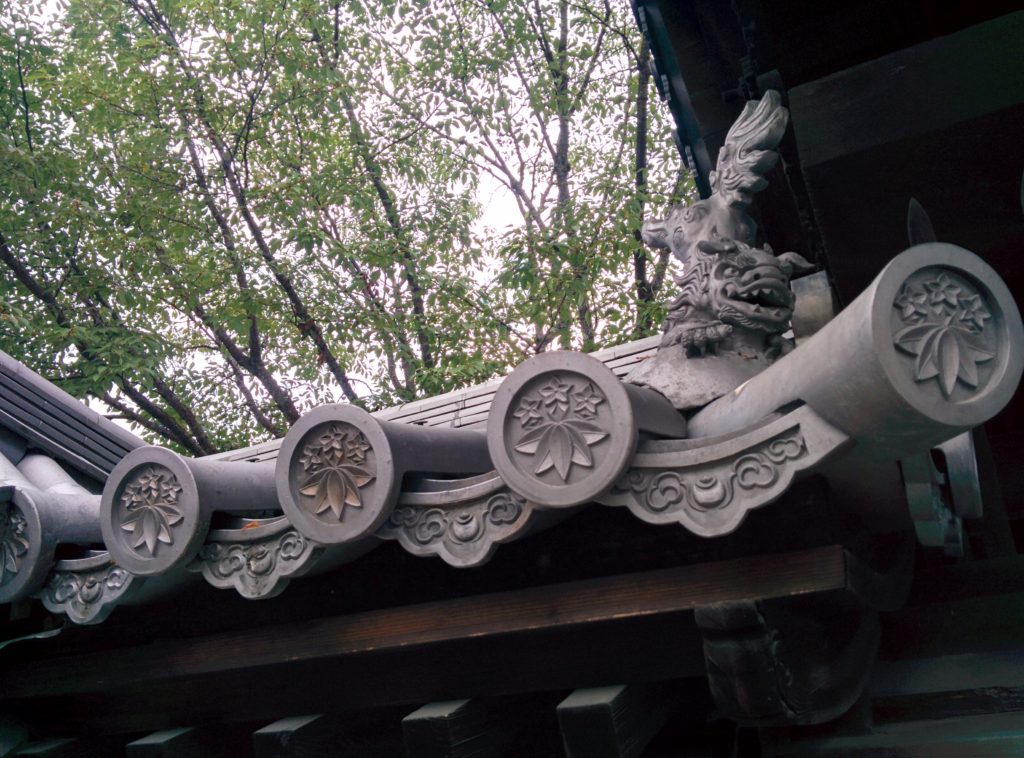
Another day, we booked a traditional tea ceremony. Our host Masumi was dressed in traditional garb, and showed us the elaborate and stylized almost-dance for preparing and consuming the tea.

The matcha tea was quite good,
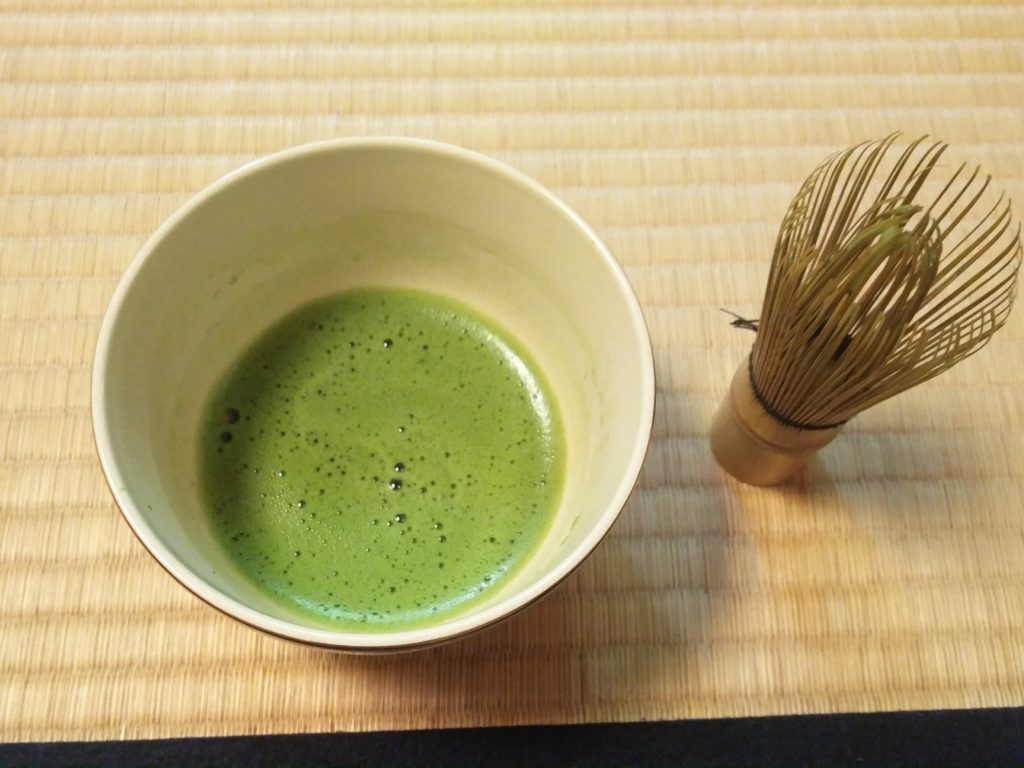
although we can’t say we were able to serve or consume it with the same effortless grace as our host.
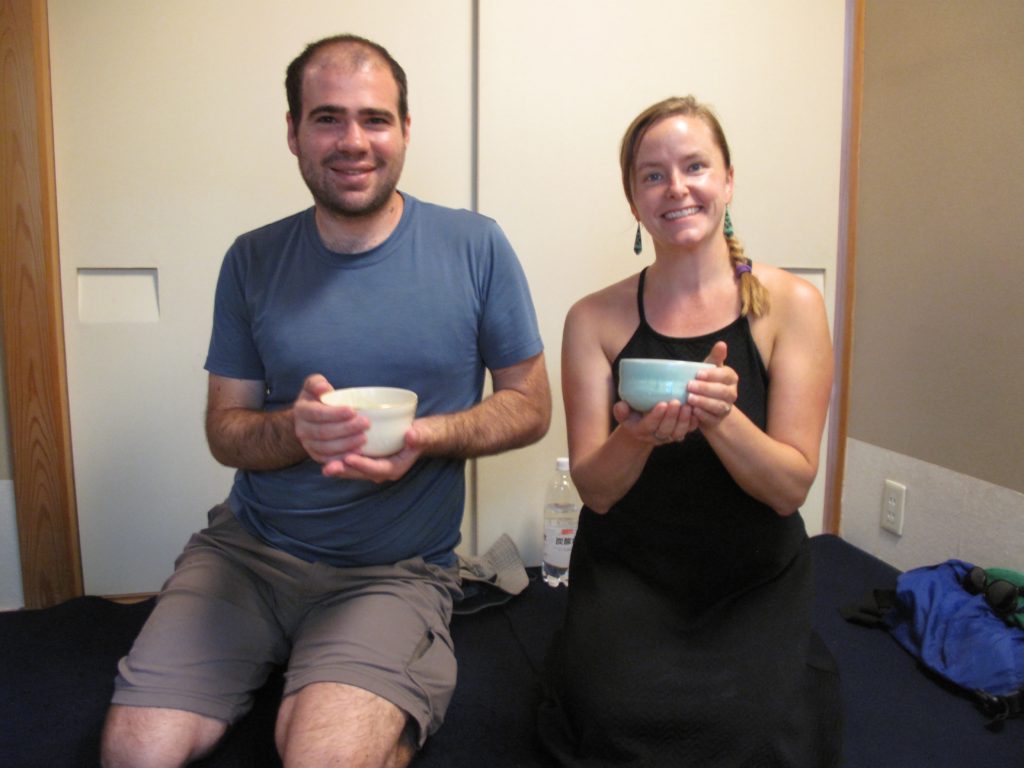
(One of us is holding the teacup the wrong way — oops!)
The off-the-beaten-path website Atlas Obscura brought us by this unassuming mound at the end of an ordinary-looking city block.
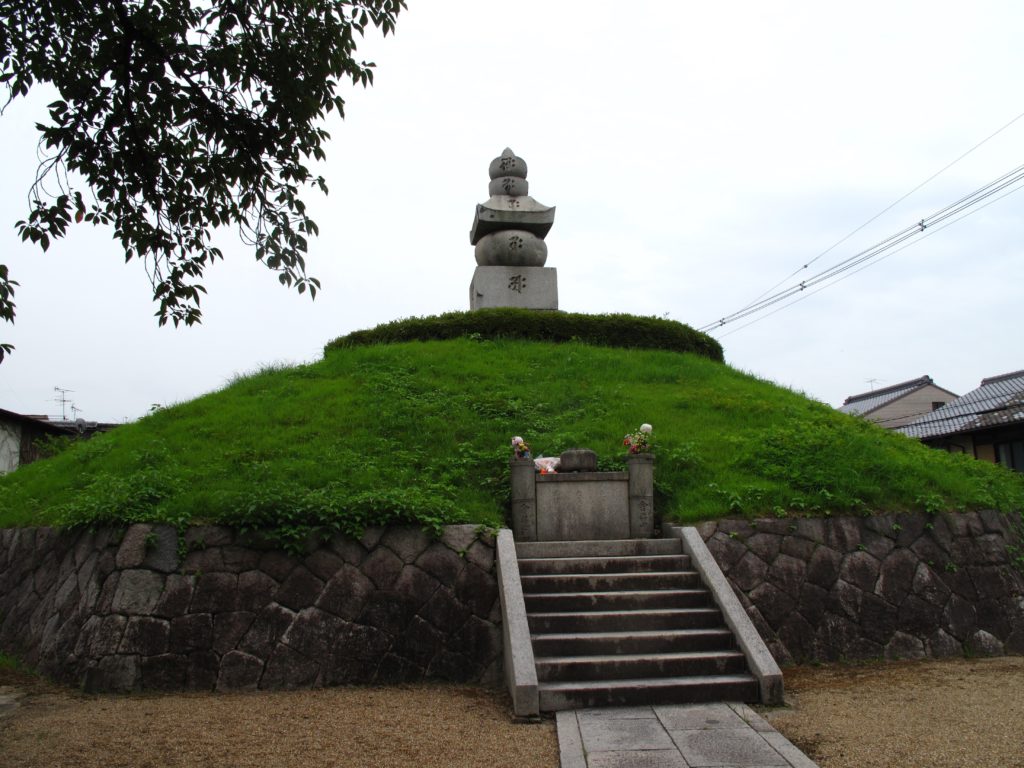
Under the grass and dirt lies a macabre secret: the ears and noses of tens of thousands of Korean soldiers killed by the Japanese military when Japan invaded Korea in the 1500s.
On a more positive note, we couldn’t leave Kyoto without visiting some of its famed temples, including the Golden Pavilion (Kinkaku-ji):

and the 13-centuries-old Fushimi Inari Taisha shrine.
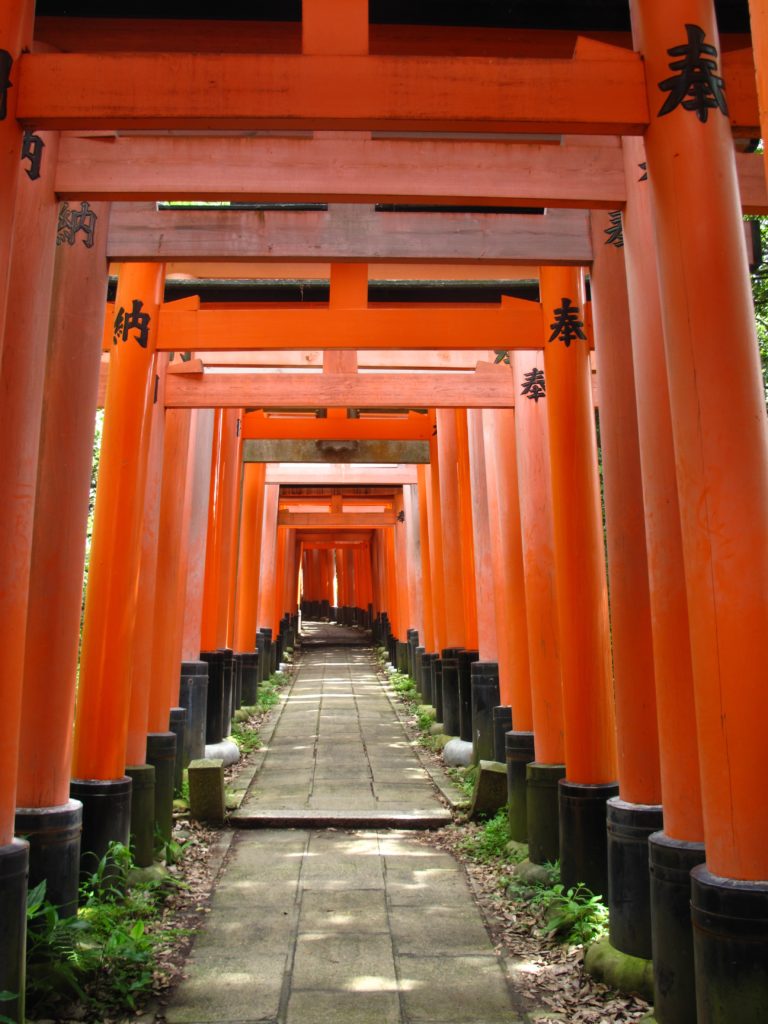
Fushimi Inari is a Shinto shrine dedicated to Inari, the god of foxes, fertility, and agriculture.

The complex was gigantic, with thousands of Torii (orange gates that symbolize the transition between the sacred and the secular) winding up the hill, connecting dozens of shrine complexes topped with even more miniature Torii.

On our way out of Kyoto, we stopped at the nearby city of Nagoya (the home of Toyota and fourth-largest city in Japan). Our main reason for visiting was to catch the second day of the yearly Nagoya Sumo wrestling tournament. Here at the entrance to the tournament, hordes of attendees lined a red carpet walkway to ogle the celebrity-status wrestlers.
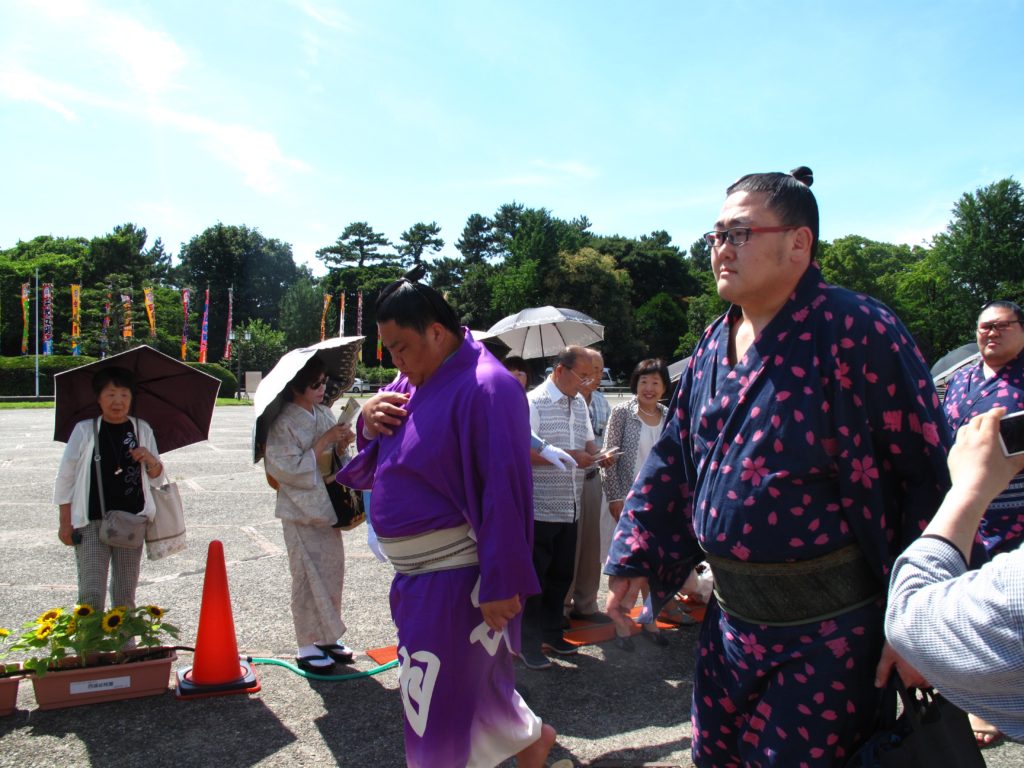
Before the matches, the wrestlers all participated in an elaborate ceremony.

Then, the matches began. Each match is more ritual than fighting: it begins with theatrical posturing,
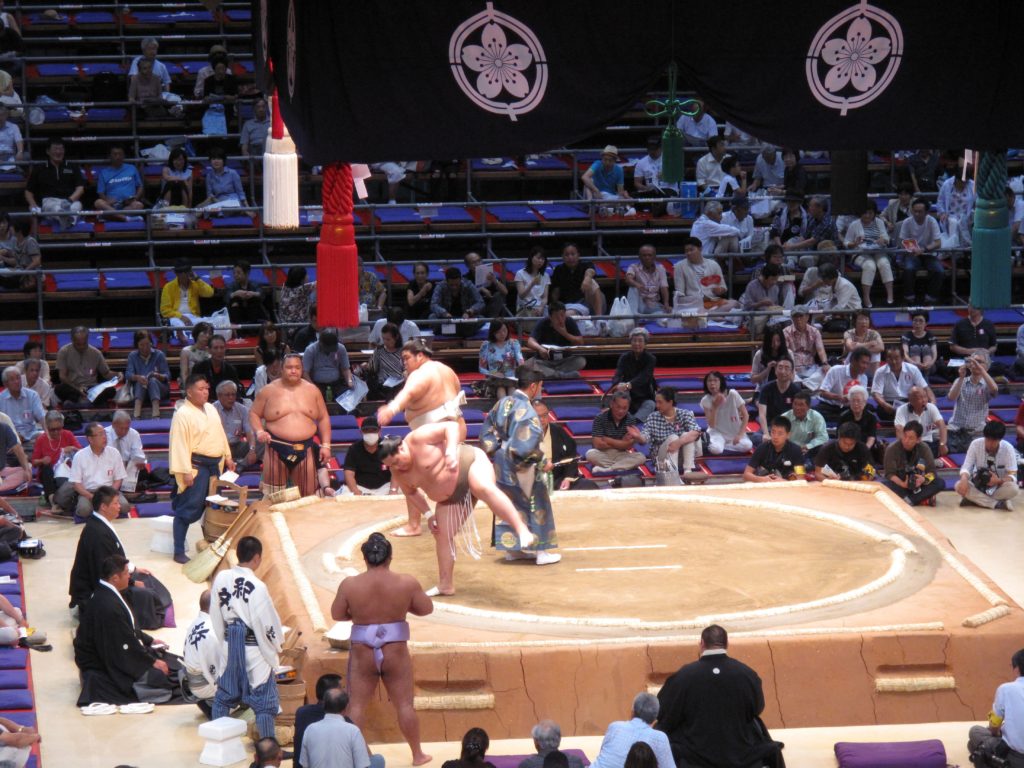
throwing salt into the ring, and often a series of psych-outs as the wrestlers try to delay the start of the wrestling to unnerve their opponents.

Finally, within seconds of them both placing their fists on the ground to start the match, it’s usually over — when either steps out of the ring or touches the ground with his body.
This match was on the longer side.
It was fascinating to watch, and while we didn’t really understand the strategy, we did find some very interesting facts online to help understand the gravity of the rituals. For example, sumo referees “carry knives on them as a symbol of their intent to commit seppuku (ritual suicide) in the instance of a mistake.”
Jason even tried the sumo food (a stew called chankonabe), which they eat in large quantities to maintain their tremendous bodyweight — at least in recent decades. In the past, Sumo wrestlers were more trim and muscular.
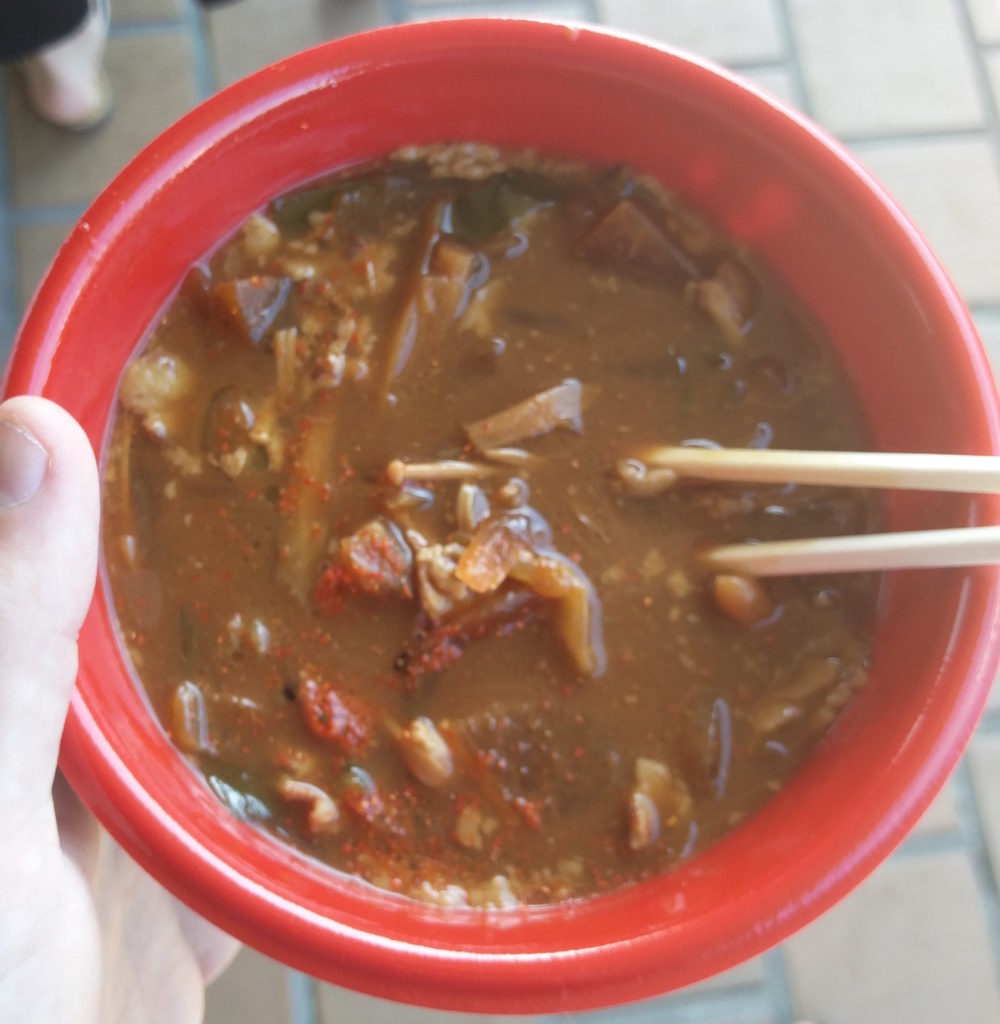
Outside of Sumo, we found the people in Nagoya to be very friendly. At two different restaurants, Sarah left an old receipt on the table and the servers came running down the street after us to bring her (trash) receipt back. And while waiting for takeout one night, this Japanese man bought us beer and shared details about his life as a COBOL programmer.

We said goodbye to the COBOL guy so we could pack for our next day’s trip to the Japanese Alps!
